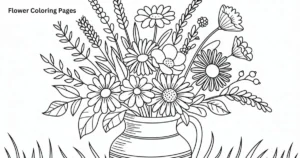Peonies are beautiful, long-lasting flowers that many gardeners love to grow. Their big, colorful blooms make any garden look stunning. One of the best things about peonies is that you can grow more of them from an existing plant through propagation.
Propagating peonies may sound hard, but it’s actually simple if you follow the right steps. Whether you’re using division or seeds, this guide will help you learn how to do it. With a little care and patience, you can enjoy more peonies in your garden every year.
Best Time to Propagate Peonies
Fall is the best season to propagate peonies. This is when the plant is dormant. It gives the roots time to settle before spring. Avoid propagating in summer or during blooming.
Mid to late September is ideal in most regions. In cooler areas, early October also works. Choose a dry, cool day for best results. Avoid wet or frosty weather conditions.
Propagating Peonies by Division
Division is the easiest and fastest method. It works well for mature plants. These plants should be at least 3 to 5 years old. Younger plants may not survive the process.
First, dig up the plant carefully. Shake off the soil to see the root clumps. Cut the roots into sections with 3–5 eyes each. Eyes are the pink buds found on the roots.
Propagating Peonies from Seeds
You can also grow peonies from seeds. But this method is slow. It may take 3 to 5 years for flowers to appear. Still, it’s a fun project for patient gardeners.
Collect seeds from mature peony pods in fall. Plant them right away in moist soil. Keep them outside over winter. They need cold to germinate in the spring.
How to Prepare Soil for New Peony Plants
Peonies like well-drained, rich soil. Loamy soil with compost works best. Dig a hole about 12 inches deep. Mix in compost or aged manure.
Avoid planting in soggy spots. Peonies don’t like wet roots. Pick a sunny place with good air flow. Space plants 3 feet apart for better growth.
Caring for Propagated Peonies
After planting, water them well. Keep the soil moist but not soaked. Add mulch to protect roots from cold. Use straw or dry leaves as mulch.
In spring, remove the mulch and let the shoots grow. Feed them with balanced fertilizer. Don’t let weeds grow around the plants. Keep the area clean and tidy.
Common Mistakes to Avoid
One common mistake is planting too deep. Keep the eyes 1 to 2 inches below the soil. Deeper planting can stop blooms. Make sure the roots face downward.
Another mistake is not dividing at the right time. Dividing during blooming can harm the plant. Always divide in fall when growth stops. This gives better chances of success.
Benefits of Propagating Your Own Peonies
Propagating peonies saves money. You don’t need to buy new plants. You can grow more from your own garden. It’s a smart choice for gardeners.
It’s also a great way to share with others. You can gift divided plants to friends. Peonies make any garden look beautiful. Plus, growing them feels rewarding.
Read More: Are Peonies Cat Safe?
Conclusion
In conclusion, propagating peonies is a simple and rewarding way to grow more beautiful plants in your garden. Whether you choose division, seeds, or root cuttings, each method has its own benefits. Division is the fastest and most reliable, while seeds require more patience.
With the right timing, soil preparation, and care, your propagated peonies will thrive and bloom for years. Avoid common mistakes like deep planting or dividing at the wrong time. Propagating not only saves money but also lets you share the joy of peonies with others. It’s a great way to expand your garden naturally and beautifully.
FAQ’s
Can you propagate peonies from cuttings?
Peonies are rarely propagated from cuttings; division is more effective.
How long does it take to grow peonies from seeds?
It can take 3 to 5 years for peonies grown from seeds to bloom.
When is the best time to divide peonies?
The best time to divide peonies is in the fall.
Do peonies need full sun to grow well?
Yes, peonies grow best in full sun with at least 6 hours of light daily.
Can I propagate peonies in pots?
Yes, but use large pots with good drainage and rich soil.









